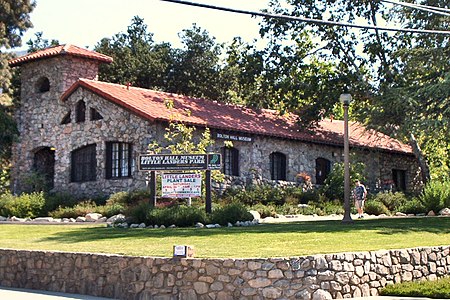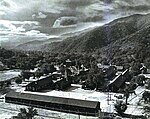Bolton Hall (California)
1913 establishments in CaliforniaAmerican Craftsman architecture in CaliforniaBuildings and structures completed in 1913Buildings and structures in the San Fernando ValleyBuildings and structures on the National Register of Historic Places in Los Angeles ... and 8 more
Buildings and structures on the National Register of Historic Places in Los Angeles County, CaliforniaCommunity centers in CaliforniaEvent venues on the National Register of Historic Places in CaliforniaHistory museums in CaliforniaLos Angeles Historic-Cultural MonumentsMission Revival architecture in CaliforniaMuseums in Los AngelesNational Register of Historic Places in the San Fernando Valley

Bolton Hall is a historic American Craftsman-era stone building in Tujunga, Los Angeles, California. Built in 1913, Bolton Hall was originally used as a community center for the utopian community of Los Terrenitos. From 1920 until 1957, it was used as an American Legion hall, the San Fernando Valley's second public library, Tujunga City Hall, and a jail. In 1957, the building was closed. For more than 20 years, Bolton Hall remained vacant and was the subject of debates over demolition and restoration. Since 1980, the building has been operated by the Little Landers Historical Society as a local history museum.
Excerpt from the Wikipedia article Bolton Hall (California) (License: CC BY-SA 3.0, Authors, Images).Bolton Hall (California)
Commerce Avenue, Los Angeles Tujunga
Geographical coordinates (GPS) Address Phone number Website External links Nearby Places Show on map
Geographical coordinates (GPS)
| Latitude | Longitude |
|---|---|
| N 34.25262956 ° | E -118.28830093 ° |
Address
Bolton Hall
Commerce Avenue 10110
91042 Los Angeles, Tujunga
California, United States
Open on Google Maps






